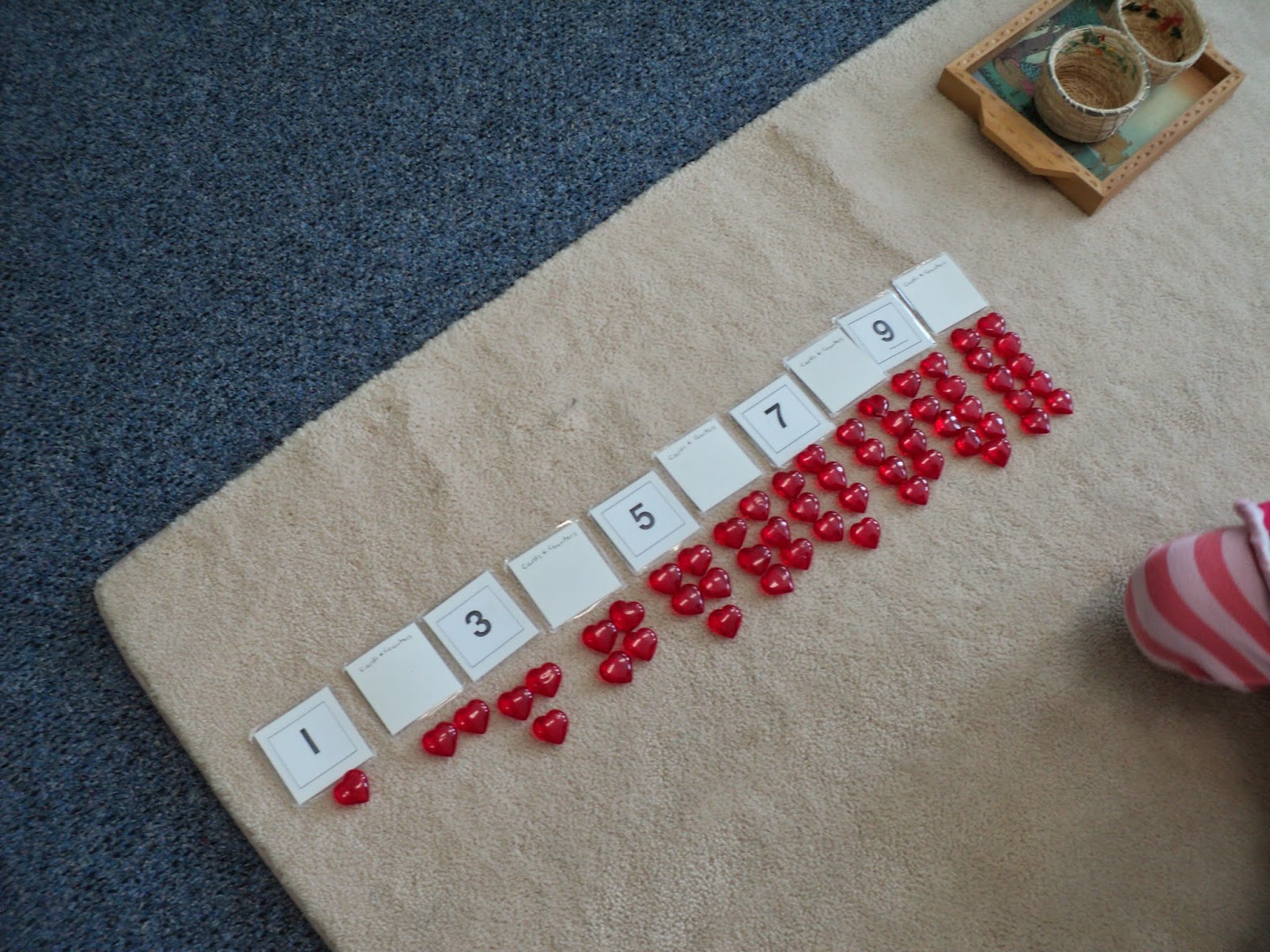This is the penultimate post in a series of posts about the
work of the children in our classrooms. This
post is about the three year olds. The
children in these photographs, which were taken during the months of January to June, are in
their first year of the Montessori casa (preschool) three year curriculum. These children will all turn four in this
calendar year and are considered preschoolers.
The Spindle Boxes
The Spindle Boxes are part of the Mathematics area of the
classroom. They are one of the early Mathematics activities introducing units of quantity
zero to nine. The Spindle Boxes consist of a box of forty-five wooden
spindles and two separate trays labelled one through four and five through
nine. The trays are placed side by side
to form a single tray of ten partitions 0 to 9. The Spindle Boxes have many aims – to show that numbers are a collection
of separate objects, to introduce zero, to illustrate that the symbols 0 to 9
are all the only ones needed for arithmetic.
In the following photographs, three year old M. is working
with the Spindle Boxes. He has read the
numbers on the partitions and set out all forty-five spindles. When doing this work, M. counts out the number
of spindles he needs, grasps them in his hand, and places them in the correct
section. He continues doing this until
the work is complete.
 |
| The Spindle Boxes In Progress |
 |
| Counting Seven Spindles |
 |
| Placing the Spindles In the Correct Section |
 |
| Seven Spindles |
 |
| Ready for Number Eight |
Cards and Counters
The Cards and Counters exercise is also an early Mathematics
exercise. This material can be made by a
teacher and consists of a box/basket of fifty-five small objects or ‘counters’
and a box/basket contained cards on which are written the numbers 1 to 10. We often change the ‘counters’ with the
seasons. These red hearts were set out
for Valentine’s Day. The aim of this
exercise is to reinforce the sequence of numbers from one to ten and to once
again show that numbers are a collection of separate objects. The child can also be introduced to the
concept of odd and even with this material.
In the following photographs, three year old M. is working with the Cards and Counters. She places the number cards 1 to 10 from left to right in order across the top of the mat. She then places the appropriate number of counters under each number. The counters are placed in columns of pairs.
 |
| A Completed Exercise |
To introduce the concept of odd and even, the child is invited
to run their finger down the centre of each column of pairs. If their finger hits a counter, this number
is odd. If their finger moves right
through, this is an even number. All
counters are paired in even numbers, while odd numbers will have one unpaired
counter.
 |
| Even Numbers |
 |
| Odd Numbers |
The Hundred Board
The Hundred Board consists of a board divided into one
hundred squares and a box with wooden tiles numbered one to one hundred. This material challenges the child to order
individual numbers to one hundred. This
material can be worked with in many ways.
The tiles can first be organized into piles 1 to 10, 11 to 20 etc. The child then takes one pile at a time and
organizes the numbers on the board. Another way is to leave all of the tiles in the box,
randomly choose one and place it on the board.
A bag can also be used. The
child takes out a tile and places it on the board.
Recently turned four year old S. has been working with the
Hundred Board since the fall. In the following photographs, S. is the child on the left of the mat. He is working with his sister and his good friend. This is a great example of children of different ages working together. In these photographs we have children in their first, second and third year of the Montessori program all working together.
S. can count and write his numbers to one hundred.
 |
| Writing Numbers 1 to 100 |
 |
| A Close-Up |
The Pink Object Boxes and the Large Moveable Alphabet
The Pink, Blue and Green Reading Schemes were described in detail
in our posts In The Classrooms With…Our Five Year Olds and In the Classrooms
With …Our Four Year Olds. The Pink Scheme consists of two and three letter
phonetic words such as bun and peg. Please
note that the children in these photographs are reading independently and have
their own reading books which they take home at the end of each day.
In these photographs, recently turned four year old D. is sounding
out and spelling the words found within a Pink Object Box.
 |
| Spelling the Pink Box Words |
 |
| Reading and Matching the Reading Cards |
 |
| Reading and Matching the Reading Cards |
 |
| Reading and Matching the Reading Cards |
The Object Boxes can also be used as a reading and writing exercise. Four year old M. has worked extensively with the Pink Object Boxes and the Large Moveable Alphabet. In the following photographs, M. is making a book of the objects found
within the box she has selected.
 |
| A Page From the Book |





